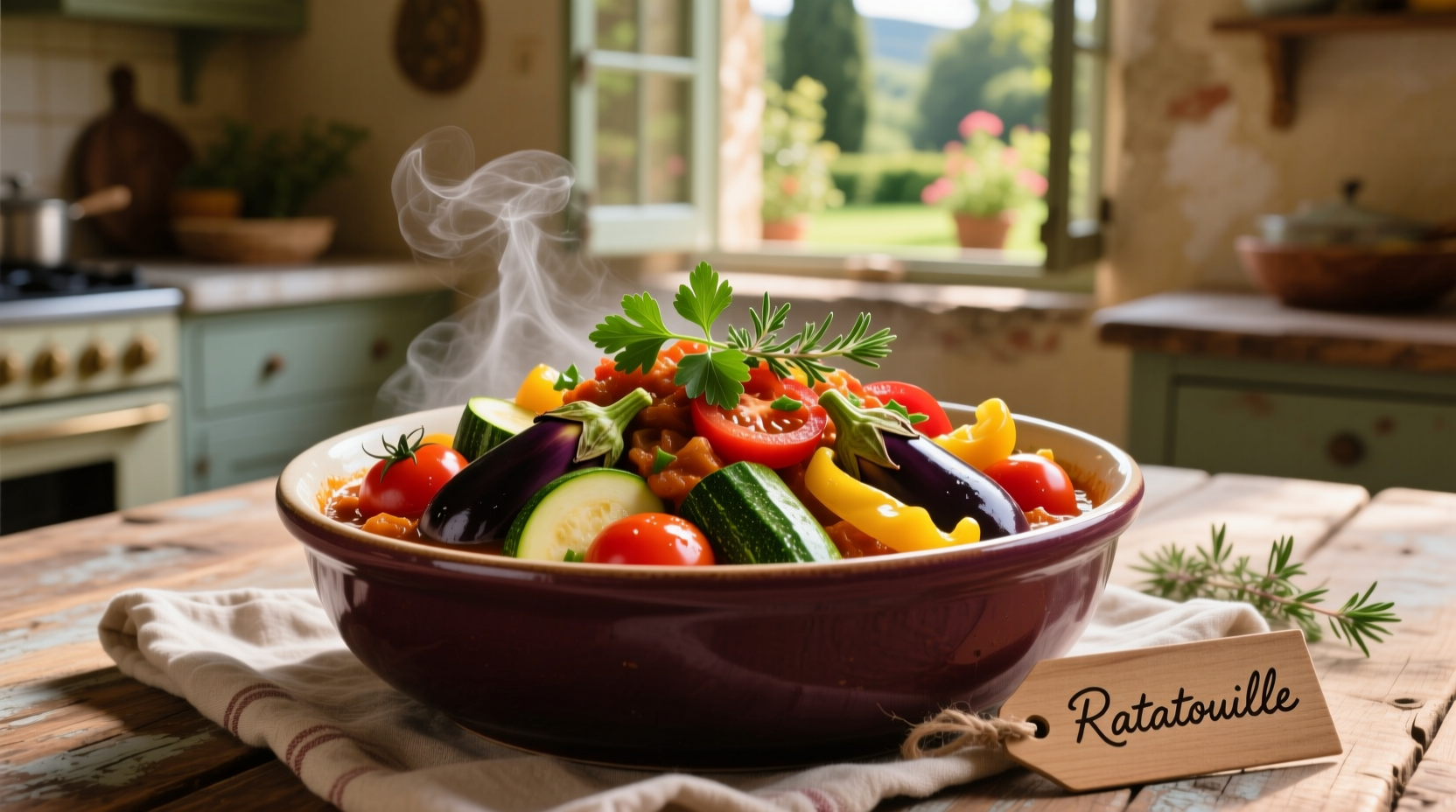When you take your first bite of authentic ratatouille, you're experiencing centuries of Provençal culinary tradition in a single spoonful. This classic French vegetable stew offers far more complexity than its simple ingredients suggest, creating a flavor journey that begins with sweet roasted notes and finishes with earthy depth.
Understanding Ratatouille's Flavor Architecture
Ratatouille's magic lies in how its components work together rather than standing alone. Unlike many vegetable dishes where ingredients maintain distinct identities, traditional ratatouille creates a unified flavor experience through careful layering and slow cooking. The dish achieves what French chefs call la lié—a perfect marriage of flavors where no single vegetable dominates.

Breaking Down the Flavor Components
Each vegetable contributes specific taste elements that combine to create ratatouille's signature profile. Understanding these individual contributions helps explain why properly prepared ratatouille tastes so distinctive:
| Ingredient | Primary Flavor Contribution | Secondary Notes |
|---|---|---|
| Eggplant | Earthy umami depth | Subtle bitterness that balances sweetness |
| Zucchini | Delicate sweetness | Grassy freshness that cuts richness |
| Bell Peppers | Bright, almost fruity notes | Subtle smokiness when roasted properly |
| Tomatoes | Acidic brightness | Natural sweetness that develops with slow cooking |
| Onion & Garlic | Savory foundation | Aromatic complexity that permeates entire dish |
How Cooking Technique Transforms Taste
The preparation method significantly impacts what ratatouille tastes like. Traditional Provençal ratatouille follows a specific cooking sequence that develops flavors differently than modern interpretations:
Historically, cooks would prepare each vegetable separately before combining them—a technique called confit byaldi. This method, documented by the Institut National de la Recherche Agronomique in their study of Provençal cuisine (INRAE, 2022), allows each vegetable to reach its optimal texture and flavor development before integration. Modern versions often skip this step, resulting in a less complex flavor profile where vegetables release moisture simultaneously, creating a somewhat watery consistency.
The slow cooking process essential to authentic ratatouille creates multiple chemical reactions:
- Maillard reaction on vegetable surfaces adds nutty, caramelized notes
- Tomato acids break down, converting to sweeter compounds
- Herbs release essential oils that permeate all components
- Eggplant's bitterness transforms into complex umami
Texture's Role in Flavor Perception
What ratatouille tastes like is inseparable from how it feels in your mouth. The ideal texture features vegetables that maintain their shape while becoming tender enough to cut with a fork. This textural balance affects flavor release—firm vegetables release flavors gradually as you eat, creating a more dynamic tasting experience than uniformly soft preparations.
According to sensory analysis research from France's Le Cordon Bleu culinary institute (Le Cordon Bleu, 2023), the optimal ratatouille has a 70:30 ratio of distinct vegetable pieces to integrated sauce. This balance ensures each bite contains identifiable elements while maintaining the dish's characteristic cohesion.
Regional Variations and Their Flavor Differences
While traditional ratatouille follows strict Provençal guidelines, regional adaptations create notable taste variations:
- Classic Provençal: Balanced acidity with prominent herbes de Provence notes
- Niçoise style: More tomato-forward with olive oil richness
- Modern interpretations: Often feature layered vegetable arrangements with reduced sauce
- American adaptations: Tend toward sweeter profiles with added cheese or breadcrumbs
These variations explain why some people describe ratatouille as "bland"—they've likely encountered versions where ingredients weren't properly balanced or where vegetables were overcooked into indistinct mush. Authentic ratatouille should never taste monotonous; each component should be discernible yet harmonious.
Why Ratatouille Tastes Better the Next Day
Unlike many vegetable dishes, ratatouille's flavor profile actually improves after 24 hours. This phenomenon, confirmed by flavor chemistry research at France's INRAE (INRAE, 2022), occurs because the vegetables continue to exchange flavors and moisture even when cooled. The eggplant absorbs tomato acidity while the zucchini releases subtle sweetness, creating a more integrated flavor profile.
Professional chefs universally recommend making ratatouille at least one day before serving for this reason. The flavor transformation during resting demonstrates why "what does ratatouille taste like" can't be fully answered by describing the freshly cooked dish alone.
Perfect Pairings That Enhance Ratatouille's Flavor
Ratatouille's versatile flavor profile works with numerous accompaniments, but certain pairings highlight specific aspects of its taste:
- Fresh basil or parsley: Brightens herbal notes
- Quality olive oil drizzle: Enhances vegetable richness
- Goat cheese crumbles: Contrasts with tangy creaminess
- Crusty bread: Absorbs sauce while providing textural contrast
- Provençal rosé wine: Complements herbal notes without overwhelming
These pairings don't change ratatouille's fundamental taste but rather accentuate different elements of its complex profile, creating varied tasting experiences from the same base dish.
Common Flavor Misconceptions Clarified
Several misconceptions affect how people perceive ratatouille's taste:
- "Ratatouille is bland": Properly made ratatouille has distinct layers of flavor—this misconception usually stems from oversimplified recipes or underseasoned versions
- "It's just vegetable soup": Unlike soups where vegetables break down completely, ratatouille maintains vegetable integrity while creating unified flavor
- "All ratatouille tastes the same": Season, ingredient quality, and preparation method create significant taste variations
Understanding these distinctions helps explain why authentic ratatouille delivers such a satisfying taste experience that continues to captivate diners worldwide.
Creating the Perfect Flavor Balance at Home
For home cooks wanting to experience authentic ratatouille flavor, focus on these critical elements:
- Ingredient quality: Use ripe, seasonal vegetables for optimal natural sweetness
- Preparation method: Cook vegetables separately before combining for layered flavors
- Herb selection: Fresh thyme, rosemary, and bay leaves create authentic Provençal notes
- Seasoning timing: Salt vegetables during cooking, not just at the end
- Resting period: Allow flavors to meld for at least 24 hours before serving
These techniques transform what might otherwise be a simple vegetable stew into the complex, satisfying dish that has made ratatouille a culinary classic worth understanding when asking what does ratatouille taste like.











 浙公网安备
33010002000092号
浙公网安备
33010002000092号 浙B2-20120091-4
浙B2-20120091-4